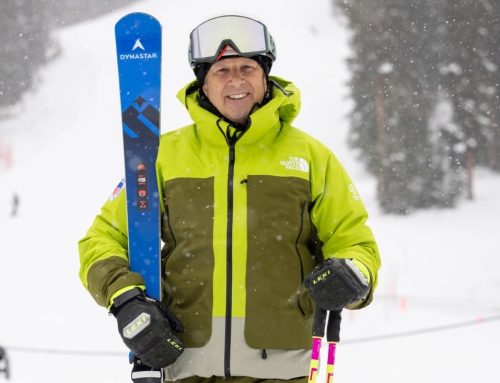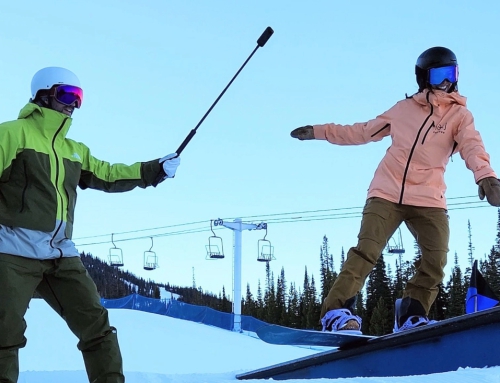New Video: Nordica Pro Series How to Pass Your Level II
PSIA-AASI Official Supplier Nordica, along with PSIA Alpine Team Coach Michael Rogan, team member Troy Walsh, and PSIA NW Tech Team member Meagan Jones, today released the second video in its Pro Series collection, providing alpine instructors everywhere with the background and tools they need to pass Alpine Level I, II, and III certification exams this season.
Whether you’re an aspiring instructor looking to pass your first certification exam or a seasoned pro aiming to reach the highest levels of mastery, this comprehensive video series is your ultimate companion on the journey to success.
PSIA-AASI is highlighting each level of this extraordinary video series, providing you with the insight and instructional background you need to achieve your professional goals this year. Please share with your colleagues and potential students to highlight all the great work you do on snow.
“The videos were created by a team of seasoned ski instructors who have successfully navigated the challenges of ski examinations,” said Nordica North America Marketing and Communications Manager Joe Cavallaro. “Our goal is simple — to empower you with the knowledge, skills, and confidence to not just pass your exams, but to truly shine as a ski instructor.”
Level II Assessment Activities Include:
FUNNEL TURN
This task can be used to assess the ability to continuously manage turn shape and size by moving from medium radius turns to progressively shorter radius turns. Turn shape and size needs to be actively adapted and travel down the fall line should be maintained.
Variations:
- Long turns to short turns.
- Short turns to shorter turns.
- Reverse funnel using short to longer turns while maintaining the same speed.
TURNS WITHIN A CORRIDOR
Ski a series of symmetrical (same width and length) turns within a corridor keeping a consistent speed through terrain and pitch changes.
Variations:
- Make a series of turns in one corridor and then change to another for a series of turns and change back to the original corridor (lane changes).
- Use different size corridors for each series of turns.
- Proactively change lines in easy moguls.
BUMPS
Use this task to assess the ability to maintain a line by adapting the use of the fundamentals as needed. Example: Maintaining pressure along the length of the skis allows the skier to turn the legs effectively, steering the skis and creating the desired turn shape. Edge change is simultaneous at the finish and initiation phase. Through the turn edges at an angle to allow for shaping and speed control. The magnitude of pressure is regulated throughout to keep the skis in contact with the snow.
Variations:
- Change where you turn on or around the bumps while maintaining a consistent speed.
- Use the terrain variations and timing of pressure release to lift skis off the snow at transition.
- Use a low edge angle to higher edge angle in one phase to control speed.
SHORT RADIUS PARALLEL TURNS
This task can be used to assess the ability to turn legs separately from the upper body through the entire turn. At the initiation phase the simultaneous edge change needs to be shown consistently. Also, the pressure shifts toward the new outside ski and is directed to the outside ski throughout the turn. During the shaping and finish phases, the edge angle and rotation of skis are managed to allow steering of the skis.
Variations:
- Steer the skis rapidly through initiation and shaping with higher edge angles at finish.
- Highest edge angles during shaping phase.
- Lowest edge angle possible while maintaining symmetrical turn shape.
RAILROAD TRACKS
This task can be used to show the ability to control and adjust edge angles. Example: Consistently increase and decrease edge angle from one set of corresponding edges to the other. The ski performance creates two distinct lines in the snow.
Variations:
- Perform railroad track turns with weight primarily on one ski.
- Change the width of the corridor while leaving two narrow tracks in the snow.
THOUSAND STEPS
This task can be used to assess the ability to manage fore/aft pressure by lifting each ski off the snow in a repeated stepping motion. Manage the rate of rotation so that a round and consistent turn shape is produced from turn to turn.
Variations:
- Increase the amount of ski divergence to tighten the turn radius.
- Keep edge angles high enough to create a platform to move from foot to foot.
HOCKEY STOP IN BOTH DIRECTIONS
This task can be used to assess the ability to turn the legs separate from the upper body and direct pressure to the outside ski while turning the legs across the hill to a stop. Skier must have the ability to control fore/aft pressure to stay in a corridor.
Variations:
- Control edge angle to allow for a long sideways slip before stopping.
- Vary the intensity of stop from easy or soft to quick and abrupt.







